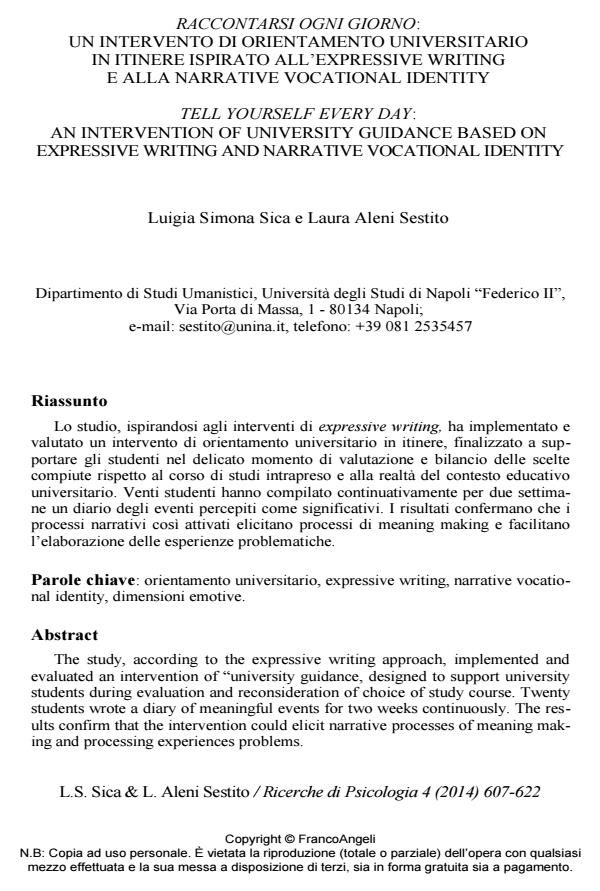Tell yourself every day: an intervention of university guidance based on expressive writing and narrative vocational identity
Journal title RICERCHE DI PSICOLOGIA
Author/s Luigia S. Sica, Laura Aleni Sestito
Publishing Year 2015 Issue 2014/4
Language Italian Pages 16 P. 607-622 File size 227 KB
DOI 10.3280/RIP2014-004005
DOI is like a bar code for intellectual property: to have more infomation
click here
Below, you can see the article first page
If you want to buy this article in PDF format, you can do it, following the instructions to buy download credits

FrancoAngeli is member of Publishers International Linking Association, Inc (PILA), a not-for-profit association which run the CrossRef service enabling links to and from online scholarly content.
The study, according to the expressive writing approach, implemented and evaluated an intervention of "university guidance, designed to support university students during evaluation and reconsideration of choice of study course. Twenty students wrote a diary of meaningful events for two weeks continuously. The results confirm that the intervention could elicit narrative processes of meaning making and processing experiences problems.
Keywords: University guidance, expressive writing, narrative vocational identity, emotions.
- Tra distress e agentività: il difficile percorso di consolidamento identitario nelle narrazioni di giovani adulti inoccupati o precari Simona Luigia Sica, Sestito Laura Aleni, in PSICOLOGIA DELLA SALUTE 1/2016 pp.111
DOI: 10.3280/PDS2016-001010 - Career development told through narrative research: exploring the stories of Italian and English young people Tiziana Di Palma, Hazel Reid, in International Journal for Educational and Vocational Guidance /2019 pp.129
DOI: 10.1007/s10775-018-9372-7
Luigia S. Sica, Laura Aleni Sestito, Raccontarsi ogni giorno: un intervento di orientamento universitario in itinere ispirato all’expressive writing e alla narrative vocational identity in "RICERCHE DI PSICOLOGIA " 4/2014, pp 607-622, DOI: 10.3280/RIP2014-004005